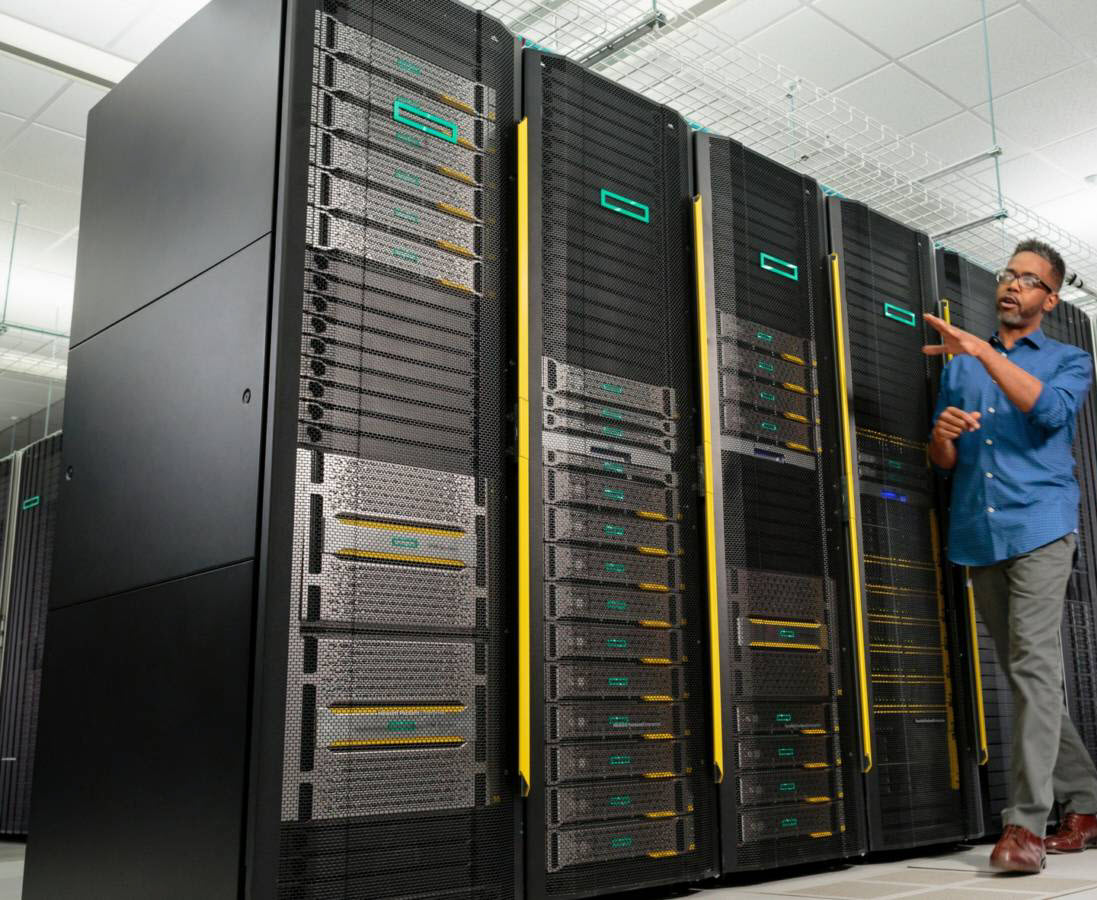 INFRA
INFRA
 INFRA
INFRA
 INFRA
INFRA
Hewlett Packard Enterprise Co. is giving its Superdome in-memory computing platform its first major upgrade in nearly three years with a modular edition that enables customers to start small and scale up to 48 terabytes of memory in a single system.
The Superdome Flex incorporates technology HPE acquired with the purchase of Silicon Graphics International Corp. last year. Specifically, it uses the node controller from SGI’s UV systems, which tie together packages of four-socket Intel Xeon modules. That’s what makes Superdome Flex a more scalable system, said Jeff Kyle, director of product management for HPE enterprise servers.
“We’ve brought a modular architecture to the platform to deliver the performance an SAP or Oracle customer needs starting at a four-socket level,” he said. The existing Superdome X platform starts at 16 sockets. “This is the ability to get into the Superdome family at a dramatically lower price point and go wherever your growth takes you,” Kyle said.
In-memory computing is growing in popularity thanks to products such as SAP SE’s HANA, Microsoft Corp.’s SQL Server 2016 and Oracle Corp.’s 12C database management systems. Organizations typically use in-memory databases to run both transactional and analytical processes in the same unit.
Combining processing and memory has significant performance benefits compared with swapping data out to disk. Superdome Flex enables customers to expand both processing modules and memory, starting at 768 gigabytes in a four-socket configuration and scaling up to 48 terabytes of memory with 32 sockets. “Customers often scale by expanding the cluster, but there are a lot of analytics workloads that you can speed up by up to 100X by working in memory,” Kyle said.
The Superdome architecture enables customers to flexibly partition central processing units and memory within a single system. “I can put eight sockets together in a one system, but I can also partition them to have one four-socket and two eight-socket systems,” Kyle said. “If I want to reconfigure for growth, it’s an easy switch.” The architecture also supports a variety of Nvidia Corp. graphics co-processors.
HPE has been tantalizing customers with development of its in-memory computing project known as The Machine. The company demonstrated a prototype in May that packs 160 terabytes of memory into a single addressable unit. The new Superdome isn’t a product of The Machine research, but both fall under the company’s memory-driven computing initiative, and the company’s lab work on The Machine is based on the Superdome platform, Kyle said. “One customer asked us if they could reference this as The Machine .5, and that’s exactly what it is,” he said.
HPE will continue to sell Superdome X at least through the end of 2019, but Superdome Flex will be a cheaper option for new customers, Kyle said. Pricing wasn’t specified.
THANK YOU